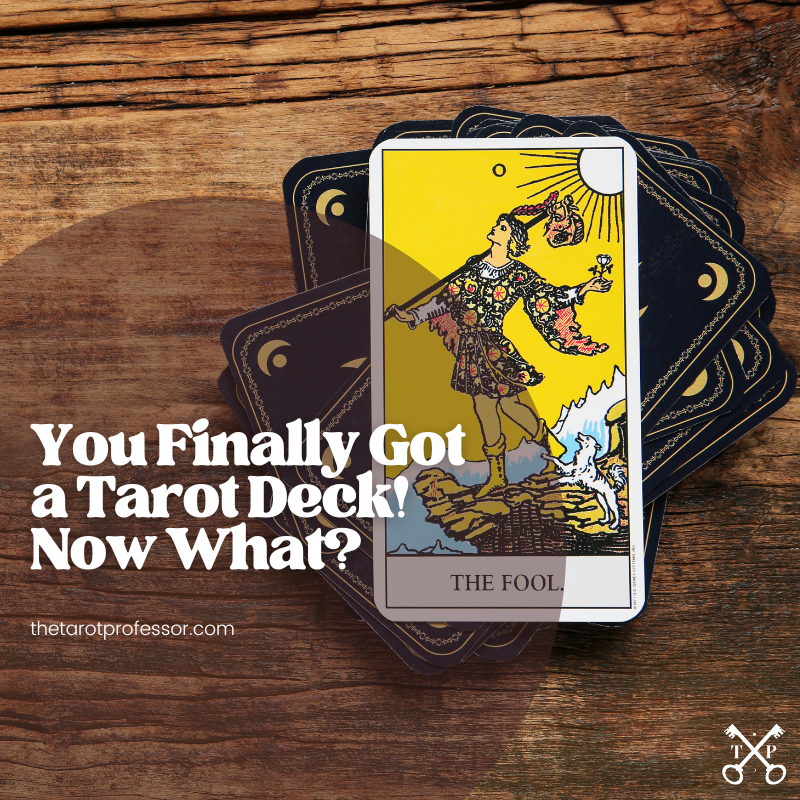
[This post may contain affiliate links. This means that I may earn a small commission at no extra cost to you if you follow one of my links and end up making a purchase.]
So you want to learn tarot. Where to start?
This post is for you if you just bought your very first tarot deck and are wondering what to do now.
First of all, congratulations on your first tarot deck! Here is your fool-proof absolute beginner’s guide to starting to use your first tarot deck.
Step 1: Get acquainted with your new tarot deck.
The cards in a brand new tarot deck, at least in my experience, are always “in order.” This usually means you see the Major Arcana cards first, starting with Card 0 – The Fool – and ending with Card 21 – The World. After the Major Arcana, you usually get the suit of wands in order, followed by the suits of cups, swords, and pentacles. Each of the suits consists of ten pip cards numbered ace through ten followed by four court cards, including a page, knight, queen, and king.
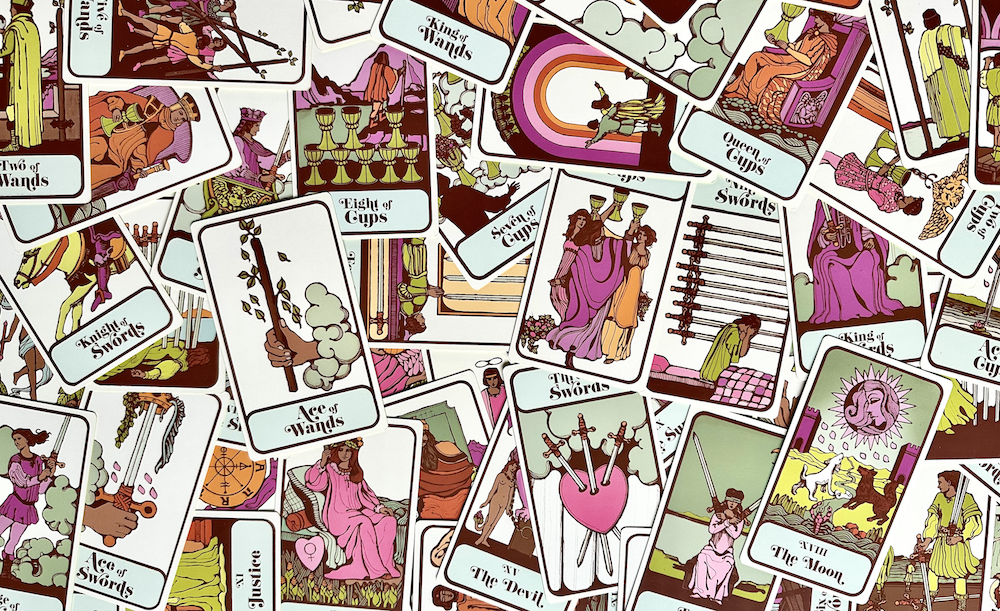
[Related: The Difference Between the Major and Minor Arcana]
Thumb through your new tarot deck and enjoy the artwork of your deck. Look at all the cards closely. Which ones are you drawn to? Do certain cards make you smile? Do some make you nervous or uneasy? Notice all of that.
The goal for fluent tarot readers is to eventually know these cards like the back of your hand. So literally look through them over and over again to get used to the imagery and symbolism of the cards.
Bonus tip: Shuffle them and put them back in order over and over again. This will help you learn the sequencing and patterns even better.
[Related: How to Shuffle Tarot Cards]
Step 2: Read the guide book that came with your deck or another trusted tarot book.
And by “another” I literally mean just one other book. At least for now. You do not need to read everything that has ever been written about tarot cards before you begin using your cards to give yourself readings.
Some people are fine reading just the guide book that came with their deck. That’s a fantastic place to start. I suggest reading one other tarot book that goes into beginner-friendly detail about the system of tarot and the basic meaning of the cards. Seventy-Eight Degrees of Wisdom by Rachel Pollack is a classic. You can pick something more modern as well, like Finding the Fool by Meg Jones Wall. There’s a wide variety in between, so pick one that makes sense for you and gets you excited to learn.
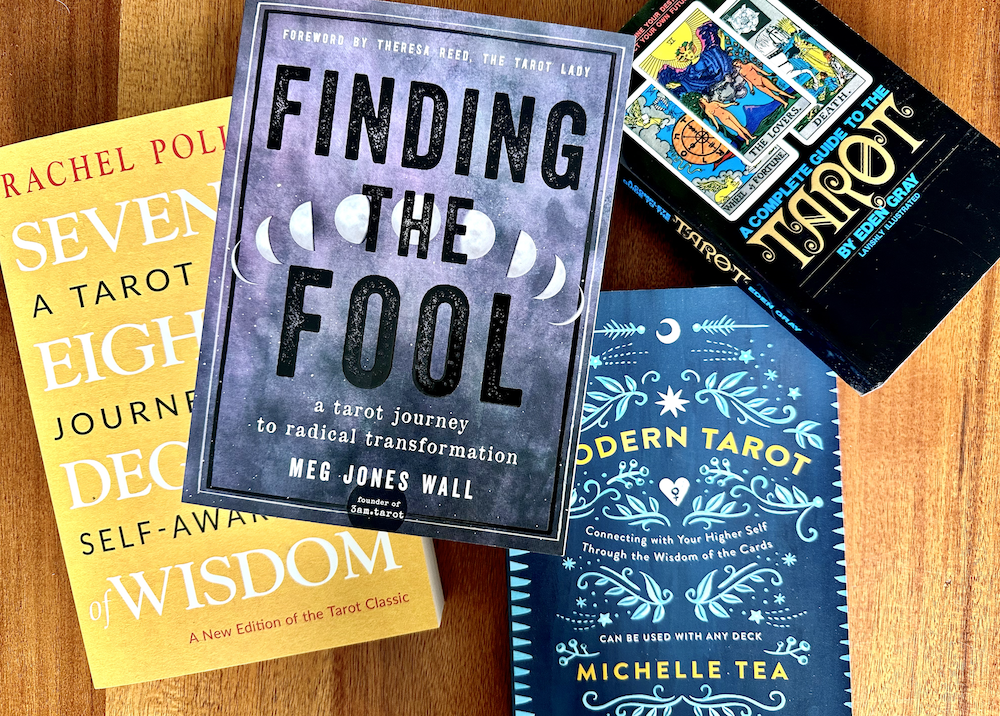
I highly recommend reading up a little about tarot before diving in because tarot is a rich system and tradition of knowledge. Trying to just wing it by figuring out what 78 individual cards mean sounds crazy to me. Yes, even if you think you are a “purely intuitive” reader. Tarot as a system is actually much more approachable than many people think if they take just a little time to understand the anatomy of a tarot deck and the mythological and numerological underpinnings of the system.
Taking some of the mystery out of reading tarot is a good thing!
But, don’t listen to anybody who says you must study all sorts of esoteric minutiae for months before being able to consult your cards for some intuitive guidance. That’s overkill and unnecessary in my mind. Keep reading and studying about tarot – endlessly! But don’t use it as a reason not to dive in is what I’m saying.
Step 3: Start pulling a daily tarot card for yourself to practice.
The thing about tarot is that you need to get comfortable with uncertainty. Tarot is an intuitive art in the sense that even though you will study and learn the traditional tarot card meanings over time, interpreting a tarot card on any given day and in response to any given question will still be broad and fuzzy. There’s no one right answer! And through practice, you will grow more comfortable and confident about that.
Another way to think about this is that a tarot card can mean a few different things. It’s up to you to intuitively pick which of those many nuances and flavors apply to the card you have drawn on this particular day for this particular reading.
So how do you possibly start doing that!?
Ask a daily tarot question and pull one card from your deck. Click below for a list of well-worded, insightful, and more productive tarot questions than “What’s going to happen?” or “What do I need to know?”
Then, once you have asked your question, shuffle and pick a card in whatever way you like. How do you shuffle? Which card do you choose? It’s up to you.
Here’s the most important part though: Try to interpret the tarot card yourself first – without looking it up! Use what you know about basic visual rhetoric. It’s not as hard as you think, and that’s the delightful part!
What’s happening in the card? What are you literally looking at? Describe it, preferably out loud to force yourself to be articulate. How does that portrait or scene make you feel? What could the story or message behind it be? Does the card portray a specific emotion? What consequence or effect does it seem to be depicting? How does all of this seem to be answering your question or guiding you in some way today?
Then, only after you have attempted interpreting it yourself, look it up in the tarot book you selected for Step 2 earlier. You could also use a tarot website like Biddy Tarot, which has a complete glossary of tarot card meanings. Notice where your interpretation was actually pretty spot on and what you didn’t quite get. Look back at the card and let it all sink in.
By the way, you’re officially reading tarot! Can you believe it!? But if you want more, keep reading!
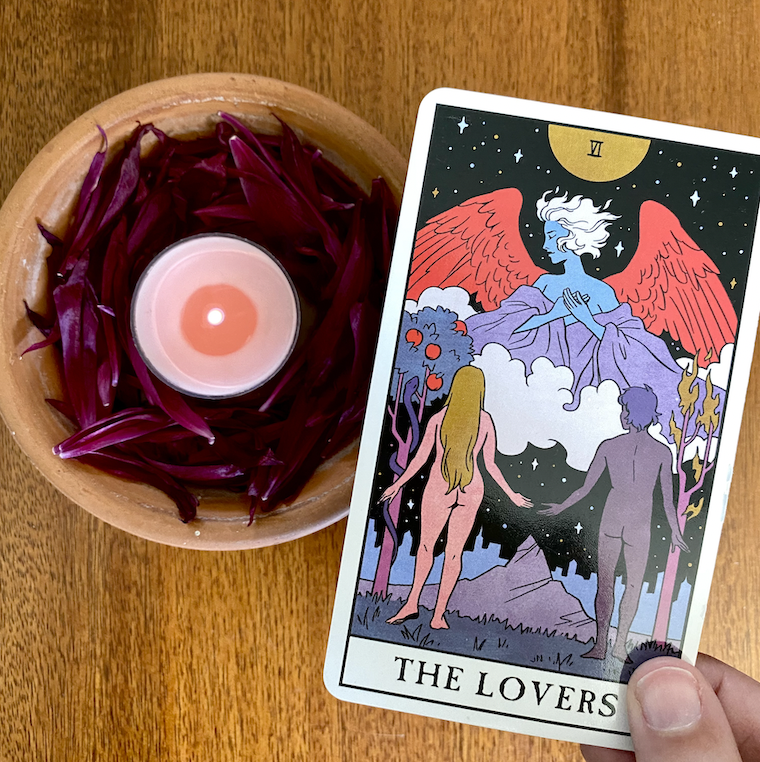
Step 4: Start a tarot journal.
Keeping track of your daily card pulls, your interpretations, and then comparing your reading to the meaning you looked up on a website or book helps you learn. It also is so helpful to look back on your interpretative progress over the weeks and months! You might get the same card over and over again (this is really common!) so you can look back and see if you’re noticing new things or refining your understanding of that tarot card. When you keep track of your daily readings in a tarot journal, you can more easily notice patterns and witness yourself remembering more and more about the cards and having to look up the cards less often.
You can create a tarot journal using a basic notebook or physical journal. Planners might work well for this too.
Or, you could keep a running Word doc or some other electronic version instead. Whatever works for you.
Step 5: Want something more advanced? Experiment with tarot spreads.
Eventually, when you get the hang of daily tarot draws, you’ll want to try something slightly more complex. Or, perhaps you want some more detailed guidance on a specific issue – like a relationship or your career path. This is what tarot spreads are for, and the rabbit hole of finding tarot spreads to try is one of the most fun parts of the tarot journey in my opinion!
Here’s an example of a three-card tarot spread to try.
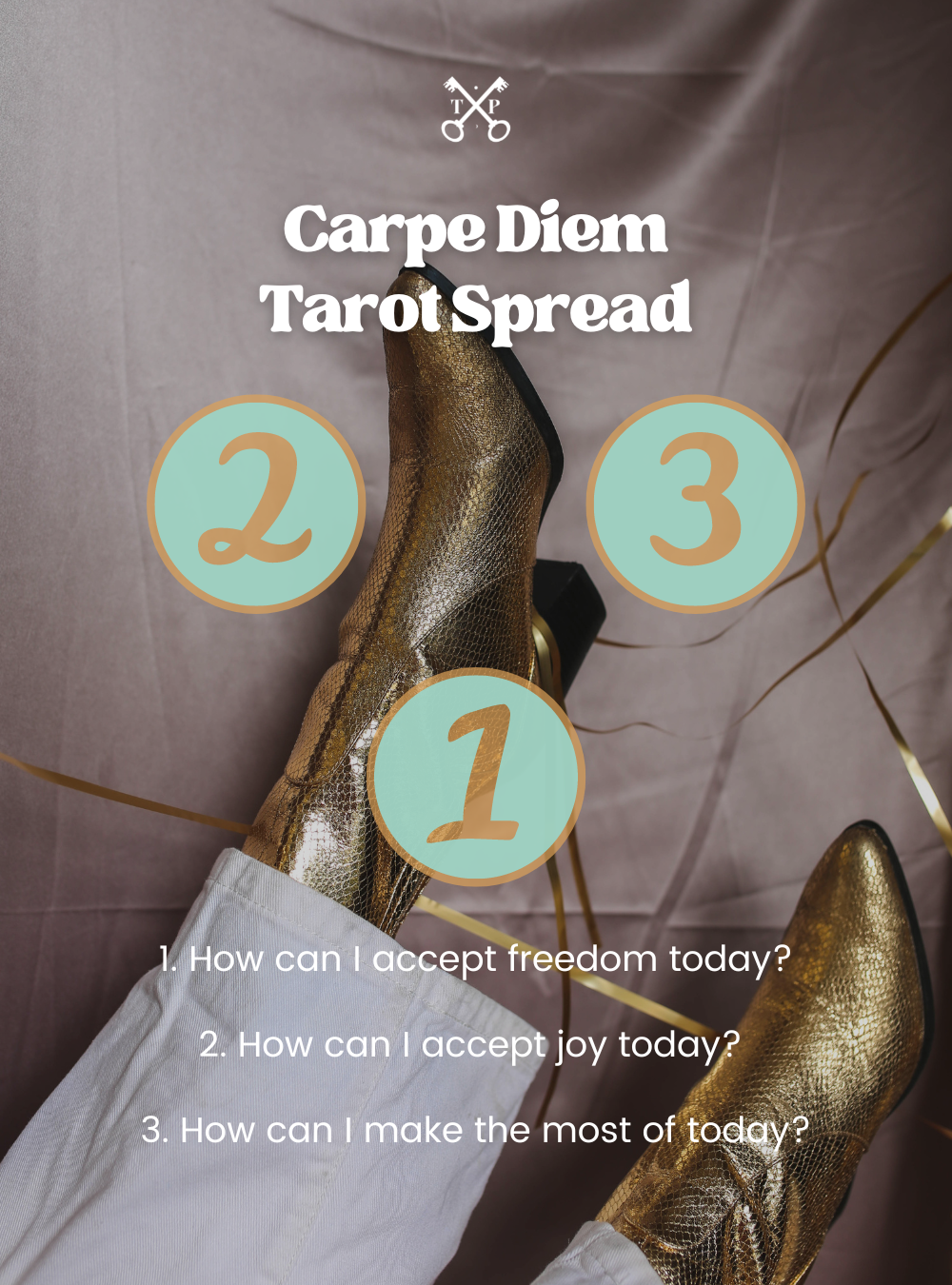
In a tarot spread, each card has a specific definition or question tied to it that tells you what that card is going to mean. It acts as a map or template for you to ask multiple questions that go together and helps you tell a more detailed story with your tarot cards.
You can find tarot spreads online or in many wonderful tarot spread books. The Tarot Spreads Yearbook by Chelsey Pippin Mizzi is a great example of one such book of tarot spreads.
Step 6: Find your tarot community.
Tarot is entering the mainstream, which means there are more tarot resources and communities available now than ever before. This very blog is an example of that. You can connect with other tarot practitioners and play around with your tarot practice. By connecting with other tarot readers and exploring all the different ways I could use tarot, I learned a lot about my own tarot style and practice.
I, for instance, am not psychic and am not trying to become a fortune-teller. I also learned that I believe tarot is most valuable when we read it for ourselves, as opposed to getting readings from other people. You, however, may come to completely different conclusions and preferences about your tarot practice. You might realize you love reading tarot for others! There are communities that help you practice your skills with others by swapping readings.
You can follow me and plenty of other tarot practitioners on Instagram. You could dive into a more introspective, reflective, and supportive community of tarot thinkers and enthusiasts on Substack as well! If your local community has a tarot group or witchy circle you could join, maybe an in-person (rather than virtual) tarot community is for you.
In the end, enjoy your tarot cards and your tarot practice, whatever it looks like for you. Tarot is a wonderful tool that can serve you in so many ways and improve your life. Use it in whatever way makes sense to you and trust your intuition on the journey.
If you have any other tarot questions at this point, I’d love to answer them if I can! Leave them below.



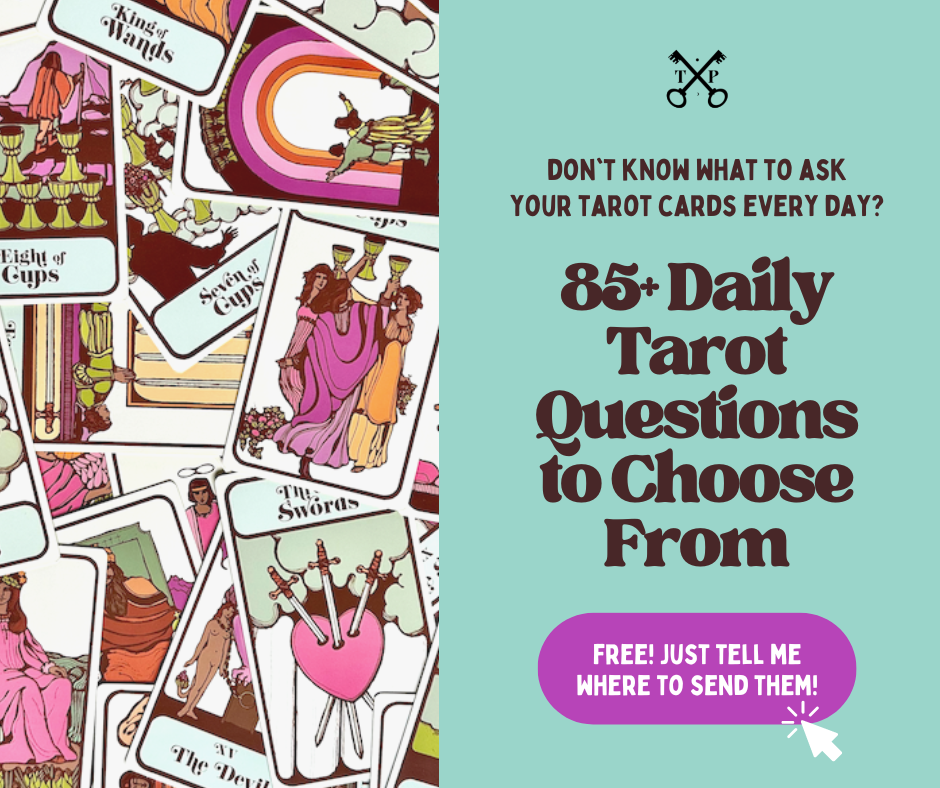
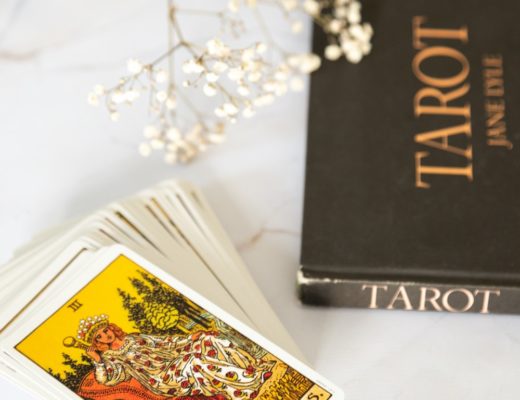
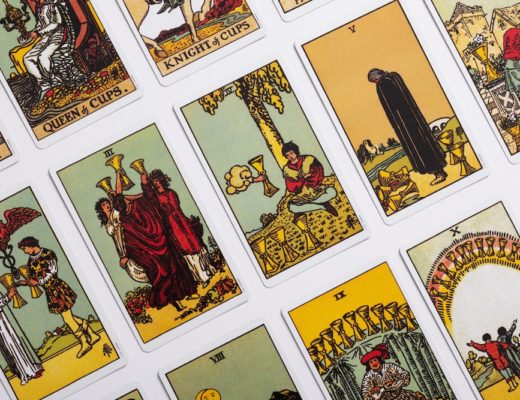
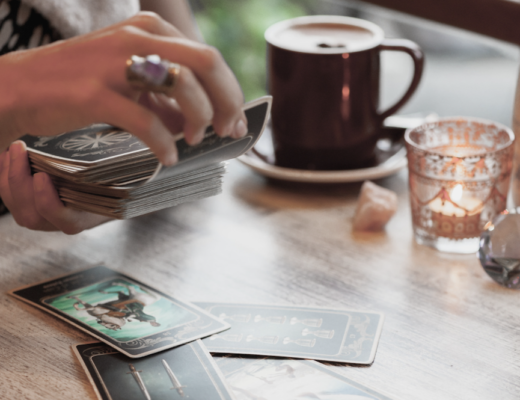
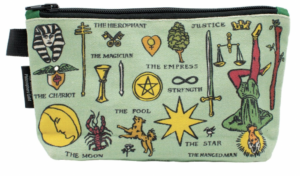
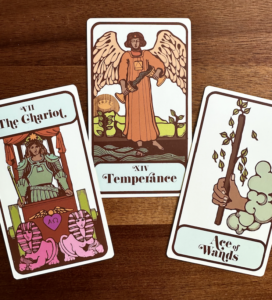
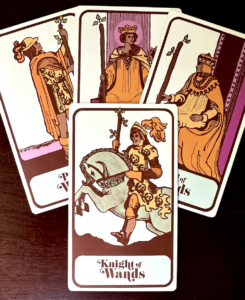
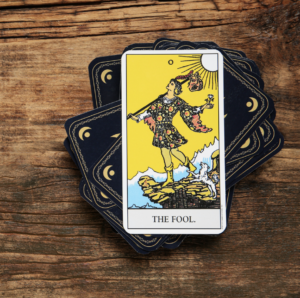
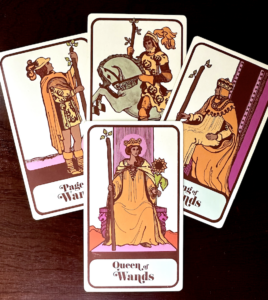
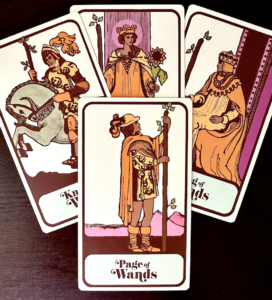

1 Comment
[…] [Related: You Finally Got a Tarot Deck! Now What?] […]